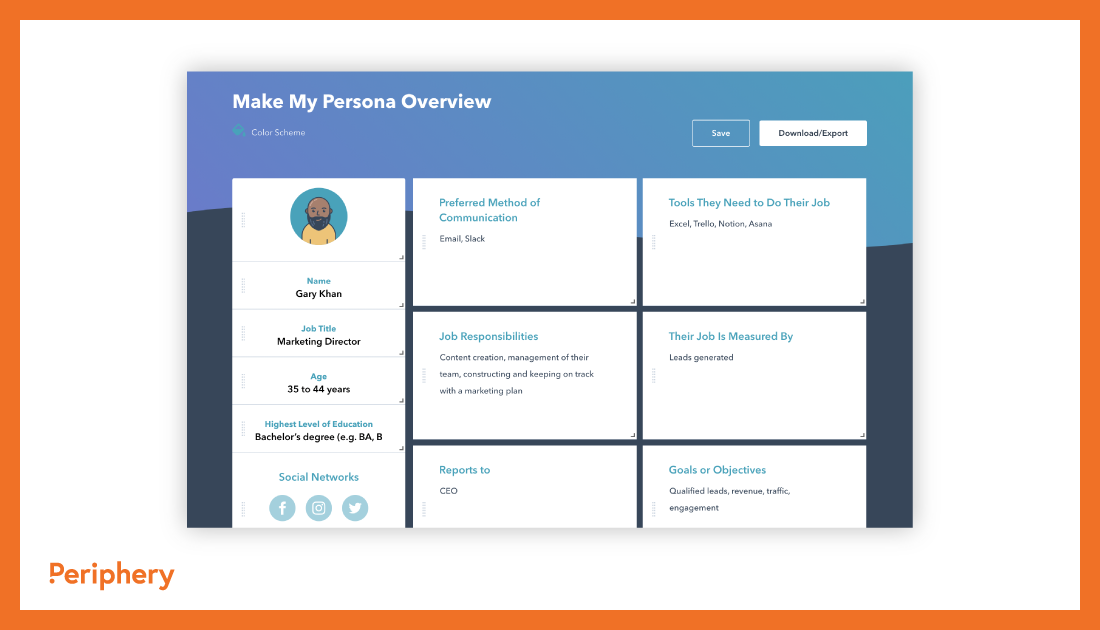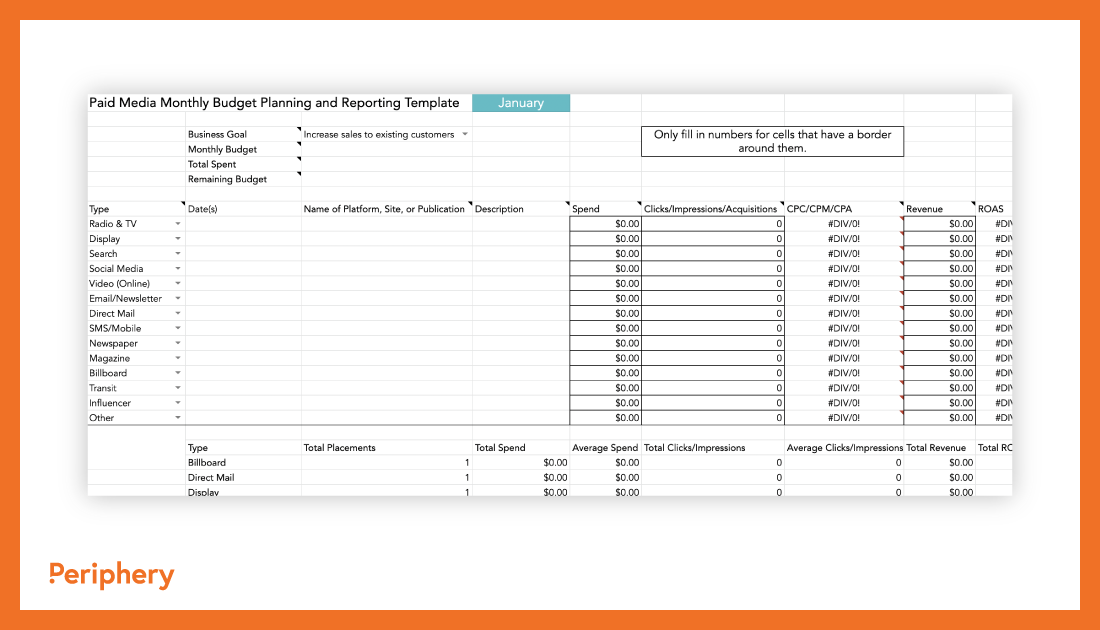It goes without saying: Competition online is stiff. Striving to stand out among the crowd is a daily pursuit for businesses. Their success largely depends on sharing media content that engages audiences and pulls in prospects wherever they may be found.
New media helps you increase awareness, maintain a continuous engagement, generate leads, and grow your business. Media strategy needs a plan to guide tracking performance, organization, distribution, and analysis of media placements.
That’s where media planning and buying come in. We’ll look at what media planning entails and what to include in a media plan.
What is Media Planning?
Media planning is the process of determining the frequency, platforms, and reasons why your business shares content with your prospects in order to align with your business objectives while maximizing ROI.
A media plan, therefore, goes into the details of the media types you will create, their cost, and where and how you’ll publish them to boost engagement and move audiences through the different stages of the marketing and sales funnels.
Will you be buying out-of-home (OOH) media placements on bus shelters or billboards? How about Google and Facebook Ads? What format will they be in — display, carousel, or Gmail? What size will the creatives need to be? All this information can be found in your media plan.
In some instances, it is guided by bigger business strategies and goals, following approved messages that align with those goals. In others, it is a strategy by itself that lays down the specifics concerning how a business will use different written and visual media to engage audiences.
What is Media Buying?
Media buying involves purchasing media placements for advertising. In today’s world, this includes channels like billboards, TV, and radio and the dynamic, infinitely rich digital space.
Media planning sets the foundation for media buying. After buying a placement, your media plan explains how you’ll get the content to your audience. Media planning is centered on the strategy behind media content creation, publishing, and sharing among your targets.
The Media Buying Process
Media buying is an extensive process that goes beyond simply exchanging money for media placements. It is usually handled by a designated media manager who has a thorough understanding of the current media landscape, the company’s goals and target audience, tracking campaign performance, analyzing data, and escalating and optimizing processes as required. The media manager can leverage their network of media vendors to get the best price and placements for the investment.
Here are some steps to help you construct an effective media plan.
1. Conduct Market Research
Identifying your ideal customer is the first step in developing a good media plan. This is your buyer persona — there are many templates and resources online to help you.
Constructing a buyer persona is a crucial step in any marketing strategy. It personifies your target customer and their needs, making it easier to anticipate their behaviours. It can be tempting to do this by speculation, but your overall strategy will be more effective if you have data to back up your assumptions.

Conducting market research helps you determine the different types of prospects that may be interested in your brand, product, or service. Each persona helps determine the messaging and how your product meets their needs.
2. Determine Your Media Planning Goals
What are your campaign goals? Which platforms will best fulfill these goals? The answers to these questions will help guide your media buying strategy to get the best results for your business.
Setting goals keeps you from falling short or spending money unnecessarily. Your goals will also help filter out some platforms and content types. Here’s a list of examples of helpful goals.
- Build and encourage collaborative efforts between the creative team. These can be video production, paid social media, vloggers, illustrators, animators, and graphic designers.
- Support efficient distribution processes of all content across platforms
- Ensure follow-ups are sent within 24 hours for communication with vendors and clients
- Analyze the performance of individual channels or the entire marketing strategy by tracking key performance indicators (KPIs) and setting SMART goals.
- For example: Double the number of registrations over the next 6 months by buying media placements on a billboard, transit shelter, and running targeted Facebook Ads.
3. Identify Channels & Create a Template
Based on your persona creation and market research, you should have a decent idea of which channels will resonate with your target audience and thus increase the likelihood they will see and engage with your ad.
There are both free and paid templates at your disposal online. You can easily customize them to get one that’s tailor-made for your business. You can also create your own using Google Sheets or Excel.
Templates help you keep track of your placements and allow you to create a timeline in conjunction with business objectives and project phases. They can help you visualize your monthly budget breakdown for each channel, and collaborate with teams who will have a hand in the project.

The one we use for our clients is very extensive. It describes all media initiatives and placements in detail from the channel and media vendor selected, prices, to the start and end dates, budget, and more.
4. Execute Your Media Plan
Before you implement the plan, make sure everyone who needs to know about it is up to date with all changes and possible roadblocks. This means involving the entire creative team in the planning, designing, final edit touches, and publication schedule. Include the contact information of the person taking point in your organization for smooth communication.
5. Measure Your Plan’s Performance
You’ll never know what to replicate or eliminate the next time around until you measure and analyze the performance of your media placements. Measuring takes you back to the goals you had before you set out. For example, you should ask yourself whether the tools your team used helped the process and whether the execution worked out as you hoped.
You should also circle back to your SMART goals based on your KPIs to evaluate the overall performance of the plan. These will vary depending on your business objectives but can include website traffic, engagement, impressions, mentions, video views to 100%, response time, month-over-month growth in subscribers, and so on.
Remember that KPIs will point to one goal or another. For example, if your goal was to build awareness, impressions, engagement, search volume, and site traffic should be your go-to KPIs, and if these metrics are high, congratulations! You have met or exceeded your initial SMART goal for brand awareness. Time to up the ante for your next campaign!
After evaluating your performance, it’s time to plan for the future. Take a few minutes to celebrate or mourn, but never lose sight of your growth plan, taking what you’ve learned and applying it to your next campaign.
Depending on your return on investment, you can consider increasing the scope of your campaign. Add a new channel, or replace one with a more relevant channel. The data will tell you where to invest more energy and resources and where to withdraw your attention.
In Conclusion
Tracking your media placements can be time-consuming and difficult. To make things worse, choosing the right channel doesn’t always come easy, as most media platforms promise the same things. If your company lacks the resources to devote time into creating and optimizing a media plan, it may be better to outsource the work to an agency with a track record of excellent results.
At Periphery Digital, we handle end-to-end media buying initiatives and maintain relationships with trusted vendors to get the best placements for budget for our clients. Contact us today to learn more about our media services and how we can help your business grow.


